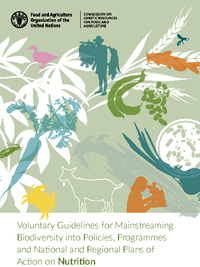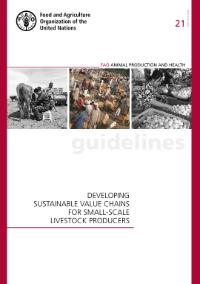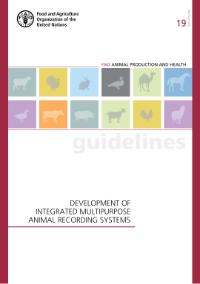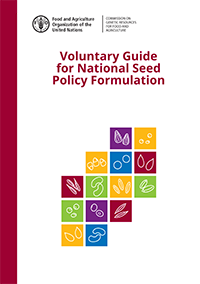Codes, standards and guidelines
Animal Genetic Resources for Food and Agriculture
Cryoconservation (the deep freezing of semen, embryos and other cells in a gene bank) is a powerful tool for managing the diversity of animal genetic resources, but is technically demanding. This publication constitutes a practical tool to guide gene bank managers and other stakeholders in the main activities of cryoconservation.
This document is part of a series of guidelines published by FAO to support implementation of the Global Plan of Action for Animal Genetic Resources, which was adopted in 2007, and remains the internationally agreed framework for the management of biodiversity in the livestock sector.
These guidelines on Innovations in cryoconservation of animal genetic resources complement and update the previous edition of guidelines on Cryoconservation of animal genetic resources, published in 2012. They describe the key processes of operating a programme for cryoconservation of animal genetic resources, starting with developing a gene banking strategy. Subsequent sections address quality management of gene banks, the choice of material to be stored, financial aspects of gene banking, development and use of collections, collection and storage of genetic material, sanitary issues in gene banking, data management, legal issues, and capacity building and outreach. Appendices provide detailed protocols for collection and cryopreservation of various tissues for common livestock species.

Whole genome sequencing and related tools now offer opportunities to evaluate the genetic diversity of livestock populations and individuals with a much higher precision than ever before, at a fraction of previous costs. Applying genomics is technically demanding, however. This publication constitutes a practical tool to guide scientists and other stakeholders in their activities of genomic characterization of animal genetic resources.
This document is part of a series of guidelines published by FAO to support implementation of the Global Plan of Action for Animal Genetic Resources, which was adopted in 2007 and remains the internationally agreed framework for the management of biodiversity in the livestock sector.
These guidelines on Genomic characterization of animal genetic resources update the previous edition of guidelines on Molecular genetic characterization of animal genetic resources, published in 2011. The guidelines describe the key processes of undertaking a study to characterize one or more livestock populations on the basis of their DNA sequences. The publication opens by reviewing the rationale for characterization of animal genetic resources and summarizing the history and prospects. The basics of carrying out a genomic diversity study are then addressed, followed by explanations of the main approaches for assessing genomes (i.e. whole genome sequencing and genotyping of single nucleotide polymorphism markers). Finally, the most important applications of genomics for assessing the genetic variation within and across populations are described. These guidelines are intended to provide countries with another tool for sustainable management and conservation of their animal genetic resources.

This publication constitutes a practical development tool, which implements the sustainable food value chain framework with a focus on small-scale livestock producers, targeting an audience of project design teams and policy-makers. Small-scale livestock producers are important actors in food production, human health and management of landscapes and animal genetic resources. However, they face a number of challenges, which hamper their productivity, access to market, and competitiveness vis-à-vis their larger counterparts. By integrating the concepts of value addition and the three dimensions of sustainability, the sustainable food value chain framework not only addresses questions concerning the competitiveness, inclusion and empowerment of small-scale producers, but also incorporates the cross-cutting issues that are increasingly embedded in development projects. These guidelines take the user through the different steps of value chain development, highlighting the particularities of the smallholder livestock sector, such as multi-functionality, specific production cycles or food safety issues, through concrete examples.
National animal recording systems offer the opportunity to support several objectives, including performance and pedigree recording, health and disease monitoring, traceability, prevention of stock theft and animal genetic resource management. These guidelines provide advice on the planning, development and implementation of comprehensive systems that can address all of these goals, as well as to maximize the chances that these systems will be sustained. The guidelines were endorsed by the Commission at its Fifteenth Regular Session in 2015.
Knowledge of animal genetic resources is fundamental to their sustainable use, development and conservation. These guidelines provide advice on how to draw up a strategy for meeting national requirements for data and information on animal genetic resources. They also offer practical advice on how to plan and implement animal genetic resources surveys. They were endorsed by the Commission at its Thirteenth Regular Session in 2011.

These guidelines offer advice on how to conduct a well-targeted and cost-effective phenotypic characterization study that contributes to improving animal genetic resources management in the context of country-level implementation of the Global Plan of Action. They were endorsed by the Commission at its Thirteenth Regular Session in 2011.
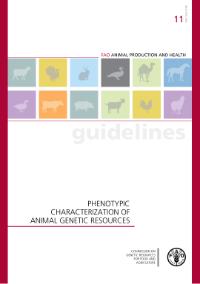
These guidelines provide a short overview of developments in the field of molecular characterization, along with practical advice for researchers who wish to undertake a molecular characterization study. They emphasize the importance of obtaining high-quality and representative biological samples that yield standardized data that can be integrated into analyses on an international scale. They were endorsed by the Commission at its Thirteenth Regular Session in 2011.
Genetic improvement is an essential component of animal genetic resources management and can make important contributions to food security and rural development. These guidelines, which were endorsed by the Commission at its Twelfth Regular Session in 2009, are intended to help countries develop effective and sustainable genetic improvement programmes, taking into account their livestock development objectives and the characteristics of their production systems.
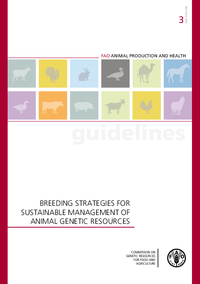
These guidelines provide advice on how to plan and implement a cryoconservation programme (conservation based on the maintenance of frozen genetic material): from priority setting and institutional development to the practicalities of designing and constructing a gene bank and cryoconserving different types genetic material. They were endorsed by the Commission at its Thirteenth Regular Session in 2011.
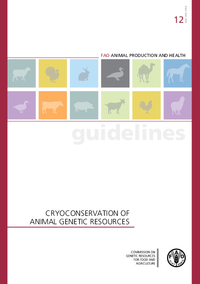
These guidelines provide advice on how to plan and implement an in vivo conservation programme (conservation based on the maintenance of live animals): from the development of a national conservation strategy to the implementation of breeding programmes in small populations and a range of methods that can be used to promote the self-sustainability of at-risk breeds. They were endorsed by the Commission at its Fourteenth Regular Session in 2013.
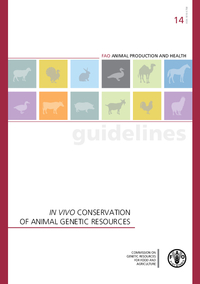
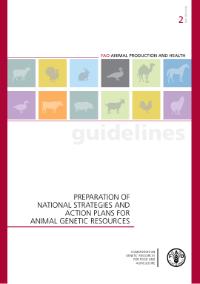
A sound institutional framework provides a basis for effective management of animal genetic resources both nationally and internationally. These guidelines present an overview of the components of the global network for the management of animal genetic resources and provide advice on how these components can be strengthened at national and regional levels. They were endorsed by the Commission at its Thirteenth Regular Session in 2011.
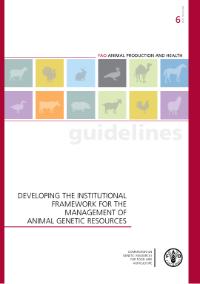
Aquatic Genetic Resources for Food and Agriculture
At its Eleventh Regular Session in 2007, the Commission recognized the importance and vulnerability of aquatic genetic resources, their roles in an ecosystem approach to food and agriculture, and their contributions to meeting the challenges presented by climate change. The Commission also confirmed the need to develop technical guidelines for the conservation and sustainable use of aquatic genetic resources in relation to the FAO Code of Conduct for Responsible Fisheries. Together with FAO's Regular Programme, the World Fisheries Trust and technical experts, the Commission supported the preparation of the guidelines Aquaculture development – 3. Genetic resource management by FAO's Fisheries and Aquaculture Department. The guidelines were developed to support FAO's Code of Conduct for Responsible Fisheries. They provide a set of instruments that support the improvement of genetic resources management in aquaculture and are addressed to decision-makers as well as to senior resource officers, consumers and others interested in responsible fisheries and aquaculture.
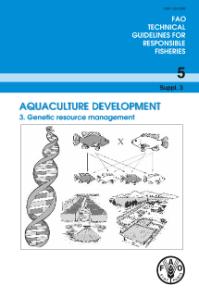
Plant Genetic Resources for Food and Agriculture
FAO has developed the "Practical guide for the application of the Genebank Standards for Plant Genetic Resources for Food and Agriculture: Conservation of orthodox seeds in seed genebanks" to be used as a companion volume to the Genebank Standards for Plant Genetic Resources for Food and Agriculture. The action steps of the genebank workflow are presented in a sequential manner and provide guidance on the complex steps and decisions required when operating a seed genebank. The accompanying summary charts for the respective action steps underscore the intended use of this practical guide as a handbook for routine genebank operations for the conservation of orthodox seeds. While this practical guide is particularly useful for genebank technicians for their day-to-day activities, it may also be used as a basis for the development of standard operating procedures and quality management systems. Genebank managers will also find it useful for conducting training exercises.
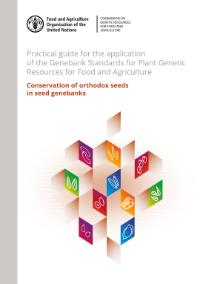
FAO has developed the "Practical guide for the application of the Genebank Standards for Plant Genetic Resources for Food and Agriculture: Conservation via in vitro culture" to be used as a companion volume to the Genebank Standards for Plant Genetic Resources for Food and Agriculture. The action steps of the genebank workflow are presented in a sequential manner and provide guidance on the complex steps and decisions required when operating an in vitro genebank. The accompanying summary charts for the respective action steps underscore the intended use of this practical guide as a handbook for routine genebank operations for the conservation of plantlets by means of in vitro culture. While this practical guide is particularly useful for genebank technicians for their day-to-day activities, it may also be used as a basis for the development of standard operating procedures and quality management systems. Genebank managers will also find it useful for conducting training exercises.
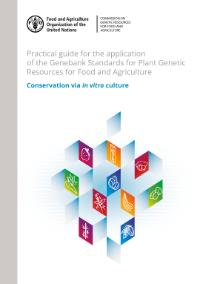
FAO has developed the "Practical guide for the application of the Genebank Standards for Plant Genetic Resources for Food and Agriculture: Conservation in field genebanks" to be used as a companion volume to the Genebank Standards for Plant Genetic Resources for Food and Agriculture. The action steps of the genebank workflow are presented in a sequential manner and provide guidance on the complex steps and decisions required when operating a field genebank. The accompanying summary charts for the respective action steps underscore the intended use of this practical guide as a handbook for routine genebank operations for the conservation of plants in the field. While this practical guide is particularly useful for genebank technicians for their day-to-day activities, it may also be used as a basis for the development of standard operating procedures and quality management systems. Genebank managers will also find it useful for conducting training exercises.
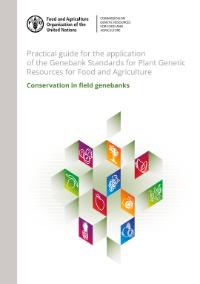
The cultivation of diverse farmers’ varieties/landraces, which tend to be well-adapted and suited to local production systems, confers increased resilience for crop production. Farmers’ varieties/landraces are also potential sources of traits for crop improvement, especially for developing varieties tolerant to biotic and abiotic stresses and for incorporating farmer-preferred traits. Unfortunately, many of these genetic resources have been replaced by modern cultivars in recent decades, resulting in a reduction in the total number of different varieties grown and/or loss of heterogeneity. Such losses make farming systems less resilient, especially to shocks from abiotic and biotic stresses. These guidelines, intended as reference materials for preparing a National Plan for the Conservation and Sustainable Use of Farmers’ Varieties/Landraces, will contribute to addressing this continuing loss of diversity. The guidelines are therefore a useful tool for development practitioners, researchers, students and policymakers who work on the conservation and sustainable use of these valuable resources.
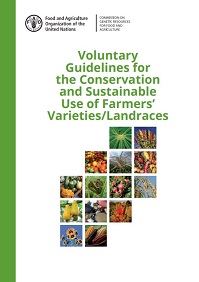
These guidelines are aimed as reference material for national governments conservation and sustainable use preparing a National Plan for the Conservation and Sustainable Use of Crop Wild Relatives and Wild Food Plants. The focus is on in situ conservation and fostering linkages between it and the ex situ conservation and ultimately, the use of CWR and wild food plants. The precise process of preparing the National Plan will depend on the national context, including the availability of baseline data, existing policy framework, and remit of the agencies that are responsible for its formulation and implementation, as well as on the resources available for its implementation.
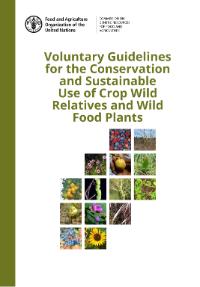
These guidelines will assist countries to implement the Second Global Plan of Action through a national strategy in harmony with other relevant national and international commitments. Cognizant of each country’s needs, capacities and constraints, national strategies for plant genetic resources for food and agriculture should identify a national vision, goals and objectives, and the corresponding plan of action, including responsibilities, resources and timeframes for activities relevant to the conservation and sustainable use of plant genetic resources for food and agriculture. The guidelines were endorsed by the Commission at its Fifteenth Regular Session in 2015.
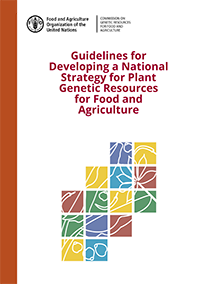
At its Fifteenth Regular Session in 2015, the Commission endorsed the Voluntary guide for national seed policy formulation. The availability of, and access to, quality seeds of a diverse range of adapted crop varieties is essential for achieving food and livelihood security and for eradicating hunger, especially in developing countries. This guide: explains what seed policies are and how they differ from seed laws; describes the participatory process of seed policy formulation; the nature and layout of seed policy documents; key elements contained in seed policies; and addresses issues involved in their implementation. It is specifically intended for use by policy-makers, national seed agencies, civil society, and public and private sector organizations, including national seed associations and farmers’ organizations involved in the seed sector.
The Genebank Standards for plant genetic resources for food and agriculture, which were endorsed by the Commission in 2013, are the outcome of a revision of the 1993 FAO/ International Plant Genetic Resources Institute (IPGRI) Genebank Standards. The revision was undertaken at the request of the Commission in the light of changes in the global policy landscape and advances in science and technology. Whereas the 1993 Genebank Standards addressed the storage of orthodox seeds only, the revised Genebank Standards also cover field genebank standards and standards for in vitro culture and cryopreservation.

Cross-sectoral
The Framework for Action on Biodiversity for Food and Agriculture was endorsed by the FAO Council in 2021. It contains more than 50 individual actions grouped into three strategic priority areas: characterization, assessment and monitoring; management (sustainable use and conservation); and institutional frameworks. It was developed in response to the country-driven report on The State of the World’s Biodiversity for Food and Agriculture.

The ABS Elements – with explanatory notes aim to assist governments considering developing, adapting or implementing ABS measures to take into account the importance of GRFA, their special role for food security and the distinctive features of the different subsectors of GRFA, while complying, as applicable, with international ABS instruments. They were welcomed by the Commission and the FAO Conference in 2019.
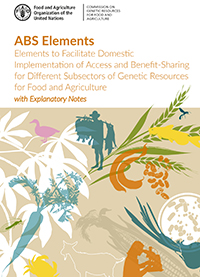
These guidelines address the genetic resources dimension of adaptation planning. They aim to assist countries in managing genetic resources – the diversity of plants, animals, aquatic resources, forests, micro-organisms and invertebrates – as a pivotal reservoir and tool at their disposal to adapt agriculture and build resilience into agricultural and food production systems. The guidelines were endorsed by the Commission at its Fifteenth Regular Session and approved by the Thirty-ninth Session of the FAO Conference in 2015.

These guidelines aim to assist countries to make the best use of biodiversity for food and agriculture in their nutrition programmes. They provide examples of how mainstreaming could be implemented, depending on countries’ needs and capabilities, as appropriate. The Commission stressed that implementation should be based on scientific evidence and be consistent with relevant international obligations. They were endorsed by the Commission at its Fifteenth Regular Session in 2015.
